Canvas is the go‑to textile when you need rugged reliability—whether for sails, backpacks, or tarps. But today’s innovations blur the lines between natural and synthetic, making “waterproof canvas” a high‑tech, multi‑layered marvel. From garden tents to luxury tote bags, understanding how canvas achieves waterproof performance is essential for designers, manufacturers, and DIYers alike.
Waterproof canvas fabrics start with a durable base—often tightly woven cotton duck or cotton/polyester blends—and gain water resistance through chemical coatings (e.g., polyurethane, PVC), hydrophobic laminates (TPU, PUL), or high‑density weave structures. True “100% waterproof” refers to hydrostatic head ratings above 1,000 mm, meaning the fabric withstands that column of water before leaking. These treatments transform traditional canvas into versatile, weather‑proof materials for outdoor gear, upholstery, and industrial applications.
I’ll never forget watching a vintage waxed‑cotton tent shrug off a monsoon‑level downpour in the Scottish Highlands. That’s the kind of performance we’re talking about—stick around, and I’ll show you exactly how these textiles work, how to choose the right one, and how to keep it waterproof for years to come.
What Defines a Waterproof Canvas Fabric?
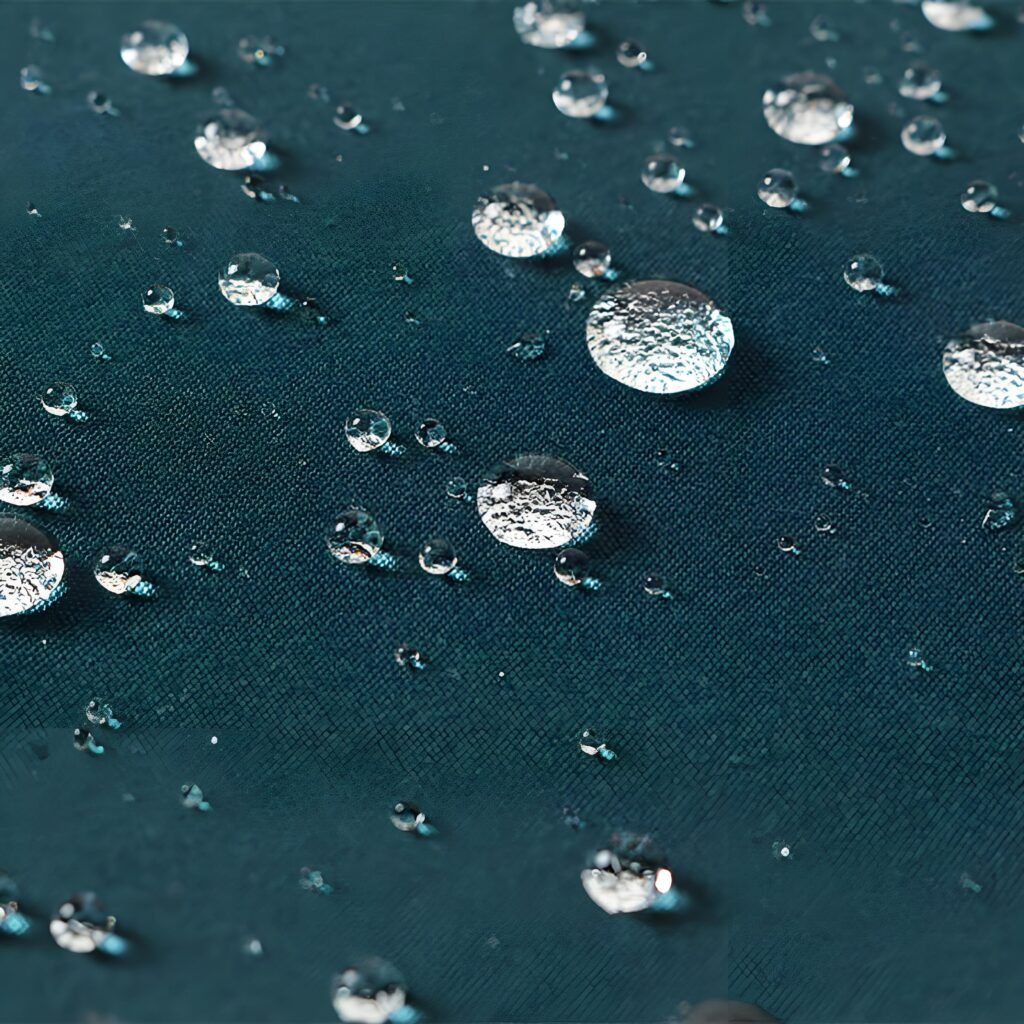
Waterproof canvas isn’t just any heavy-duty cloth—it’s a fabric engineered to resist water penetration under pressure. A true waterproof canvas exhibits a hydrostatic head—the height of a water column it can withstand—typically 1,000 mm or higher (1 meter) to qualify. Unlike water‑repellent or water‑resistant canvas, which only sheds light rain, waterproof canvas remains dry under heavy showers and standing water. This is achieved by coatings (polyurethane, PVC), laminations (TPU, PUL), or wax treatments that seal the weave without compromising flexibility.
- Hydrostatic Head Ratings 1,000 mm: Light rain protection 5,000 mm: Heavy rain, standing water tolerance 10,000 mm+: Extreme conditions, marine use
- Waterproof vs. Water‑Resistant Water‑Resistant: Repels splashes; no pressure test required Waterproof: Passes hydrostatic head under test
- Breathability Trade‑Off PU Laminate: MVTR 1,000 g/m²·24 h (moderate breathability) Waxed Canvas: MVTR 500 g/m²·24 h (low breathability)
| Classification | Hydrostatic Head (mm) | Example Treatment | MVTR (g/m²·24 h) |
|---|---|---|---|
| Water‑Resistant | < 500 | DWR spray | N/A |
| Waterproof (Entry) | 1,000–3,000 | Wax coating | 500–800 |
| Waterproof (Performance) | 5,000–10,000 | PU/PVC lamination | 800–1,200 |
| Marine‑Grade | > 10,000 | Thick PVC or TPU layer | 200–500 |
Which Base Fibers and Substrates Are Used for Waterproof Canvas?
While canvas once meant 100% cotton duck, modern waterproof variants often start with cotton, cotton/polyester blends, or synthetic bases. 100% cotton canvas can be made waterproof with wax or PU coatings, but it remains breathable and holds wax well. Duck canvas (10–12 oz/yd²) is the industry standard for waxed and oil‑treated waterproof jackets. Blends like 65/35 cotton/polyester enhance tear strength and mildew resistance, making them ideal for awnings and outdoor furniture. Fully synthetic bases (e.g., 100% polyester) require harder coatings but offer unmatched UV stability and low moisture regain.
- 100% Cotton Duck Weight: 10–12 oz/yd²; Shrinkage: < 1% when sanforized Pros: Soft hand, dyeable; Cons: Lower UV resistance
- Cotton/Polyester Blends Composition: 65/35; Pros: +10% tear strength, mildew resistance; Cons: -15% breathability
- Synthetic Canvas Bases Polyester: 12 oz/yd²; Pros: Low water absorption (0.4 g/g), UV stable; Cons: Stiffer hand
| Base Fabric | Composition | Weight (oz/yd²) | Pros | Cons |
|---|---|---|---|---|
| Cotton Duck | 100% cotton | 10–12 | Breathable, soft, natural aesthetic | UV sensitivity |
| Cotton/Polyester Blend | 65/35 | 10–12 | Tear & mildew resistance | Reduced breathability |
| 100% Polyester | 100% PET | 10–12 | UV & hydrolysis stable, low absorbency | Stiffer, less dyeable |
How Are Waterproof Coatings and Treatments Applied to Canvas?
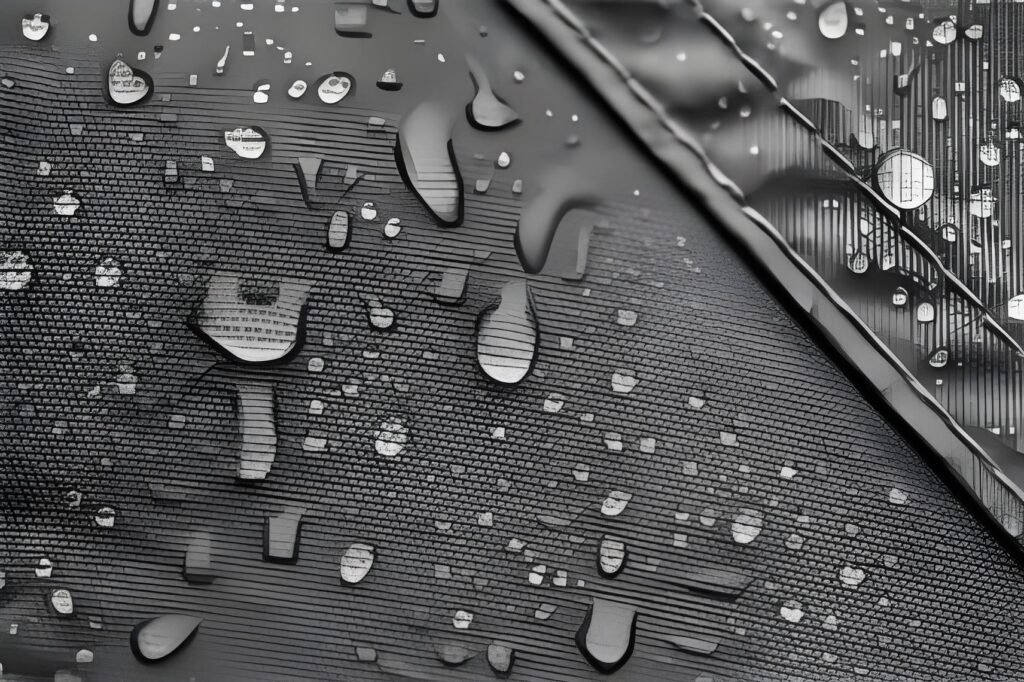
Canvas gains its waterproof armor through wet or dry coating and lamination processes. Wax treatments (paraffin/carnauba blends) are brushed or sprayed and then heat‑set, seeping into fibers to block water while preserving some breathability. Polyurethane (PU) coatings apply a liquid layer (5–15 µm) on one side, bonding under heat. PVC coatings (30–100 µm) create a tough, fully impermeable barrier—common in tarps and marine covers. TPU lamination sandwiches a thermoplastic polyurethane film between canvas layers, offering flexibility, high hydrostatic rating (> 10,000 mm), and chemical resistance. Coating weight and thickness directly correlate with waterproof performance but inversely with breathability.
- Wax Coating Application: Brush or spray, 5–8% add‑on by weight Performance: 1,000–3,000 mm hydrostatic; MVTR 500–800 g/m²·24 h
- PU Coating Application: Knife‑over‑roll or reverse‑roll; 5–15 µm thickness Performance: 3,000–10,000 mm hydrostatic; MVTR 800–1,200 g/m²·24 h
- PVC Coating Application: Calender or lamination; 30–100 µm thickness Performance: 10,000–30,000 mm hydrostatic; MVTR 200–500 g/m²·24 h
| Treatment Type | Thickness | Hydrostatic Head (mm) | MVTR (g/m²·24 h) | Flexibility |
|---|---|---|---|---|
| Wax Coating | 5–8% owf | 1,000–3,000 | 500–800 | High |
| PU Coating | 5–15 µm | 3,000–10,000 | 800–1,200 | Medium |
| PVC Coating | 30–100 µm | 10,000–30,000 | 200–500 | Low |
| TPU Laminate | 20–50 µm film | 5,000–15,000 | 500–800 | High |
Which Canvas Constructions and Coatings Enhance Water Resistance?
Beyond coatings, weave density and fabric weight amplify water defense. A heavy‑weight canvas (12 oz/yd²) with tight plain weave (14×14 threads/cm) minimizes capillary action, reducing water wicking. Double‑wax finishes layer wax twice, offering a hydrostatic head of 5,000 mm. Incorporating hot‑melt laminates between canvas plies achieves seamless waterproofing, crucial for outdoor tents. Edge sealing tapes on seams and taped zippers complete the system, ensuring no leak points remain.
- Weave Density & Weight Light: 8 oz/yd², 10×10 threads/cm; hydrostatic 1,000 mm after coat Medium: 10 oz/yd², 12×12; hydrostatic 3,000 mm after wax Heavy: 12 oz/yd², 14×14; hydrostatic 5,000 mm after double wax
- Seam & Edge Treatments Seam Sealing Tape: +0 mm leak under 5,000 mm head Hot‑Melt Welds: Permanent waterproof joint
| Canvas Weight | Weave (threads/cm) | Treatment | Hydrostatic Head (mm) |
|---|---|---|---|
| 8 oz/yd² | 10×10 | Single wax | 1,000 |
| 10 oz/yd² | 12×12 | PU coating | 3,000 |
| 12 oz/yd² | 14×14 | Double wax + seam tape | 5,000 |
Do Fiber Blends and Laminates Affect Waterproof Performance?
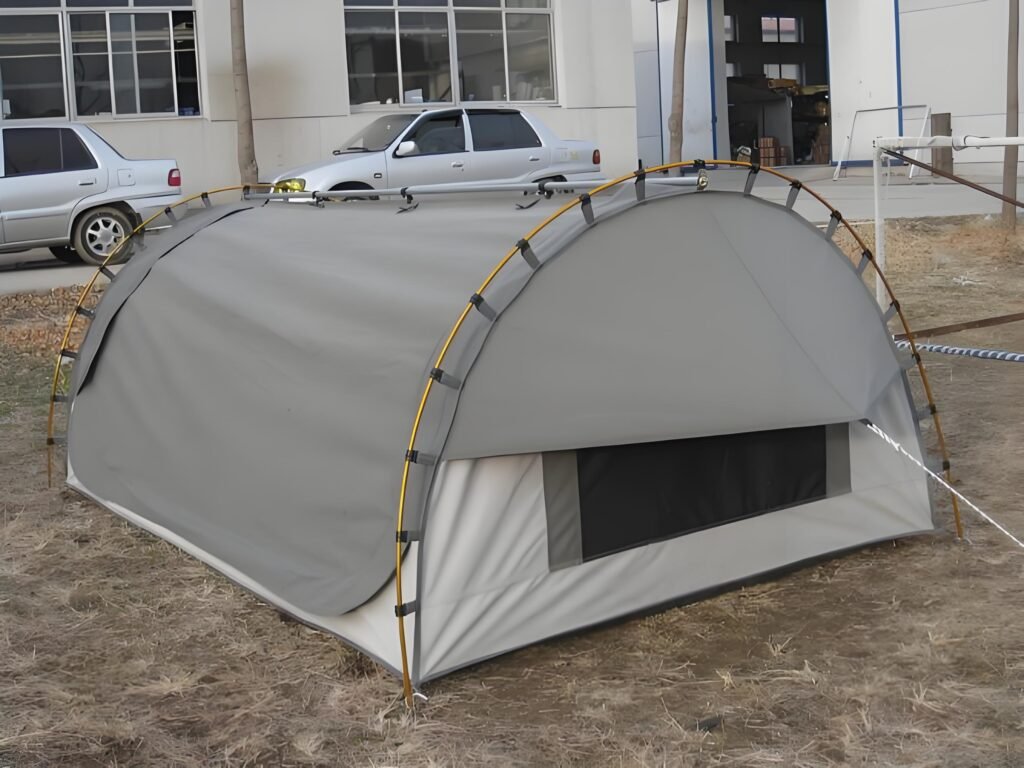
Blending fibers and laminating layers tailor canvas for specific needs. PUL (Polyurethane Laminate) fuses a breathable PU film to cotton, yielding waterproof, stretchable fabric for medical gowns and cloth diapers. TPU (Thermoplastic Polyurethane) laminates offer high abrasion resistance and hydrostatic head > 10,000 mm, ideal for marine covers. Trillium (nylon/cotton blend) combines cotton’s hand with nylon’s strength, laminate‑treated for waterproof backpacks. These hybrid canvases balance strength, flex, and breathability, outperforming simple coated cotton in demanding applications.
- PUL Fabric Composition: 100% cotton + 20 µm PU film Properties: 5,000 mm hydrostatic, MVTR 1,000
- TPU Laminate Composition: Nylon or PET base + 30 µm TPU Properties: 10,000–15,000 mm hydrostatic, MVTR 500
- Trillium Fabric Composition: 60/40 nylon/cotton + PU laminate Properties: 7,000 mm hydrostatic, tear strength +15%
| Hybrid Canvas | Base Blend | Laminate Type | Hydrostatic Head (mm) | MVTR (g/m²·24 h) |
|---|---|---|---|---|
| PUL | 100% Cotton | PU film | 5,000 | 1,000 |
| TPU Laminate | 100% Nylon/PET | TPU film | 10,000–15,000 | 500 |
| Trillium | 60/40 Nylon/Cotton | PU film | 7,000 | 800 |
How Do You Test and Measure Canvas Waterproofing?
Testing waterproof canvas requires hydrostatic head and spray tests. The ISO 811 hydrostatic head method holds a water column over fabric until leakage; results are recorded in millimeters. The AATCC 22 Spray Test rates water spray retention on a scale (0–100). A high‑performance marine canvas might score > 1,500 mm in hydrostatic testing and 100 in spray. Real‑world testing includes dipping samples in waves or simulating rain in weather chambers. Regularly test aged samples to ensure longevity of waterproof treatments.
- ISO 811 Hydrostatic Test Procedure: 2 cm diameter sample; increasing water pressure. Benchmark: ≥ 5,000 mm for outdoor gear.
- AATCC 22 Spray Test Rating: 0 (wet) to 100 (dry). Desired: ≥ 80 for water‑resistant; 100 for waterproof.
- Weathering Chambers Cycle: UV + water spray; tests durability of coatings over 1,000 h.
| Test Method | Measurement | Pass Criteria | Real‑World Equivalent |
|---|---|---|---|
| ISO 811 | Hydrostatic Head (mm) | ≥ 1,000 (entry), ≥ 5,000 (performance) | Heavy rain, standing water |
| AATCC 22 | Spray Rating (0–100) | ≥ 80 (resist), 100 (waterproof) | Light spray to torrential rain |
| Weathering Chamber | Hours to failure | ≥ 1,000 h UV/rain | Years of outdoor use |
What Are the Most Common Applications for Waterproof Canvas?
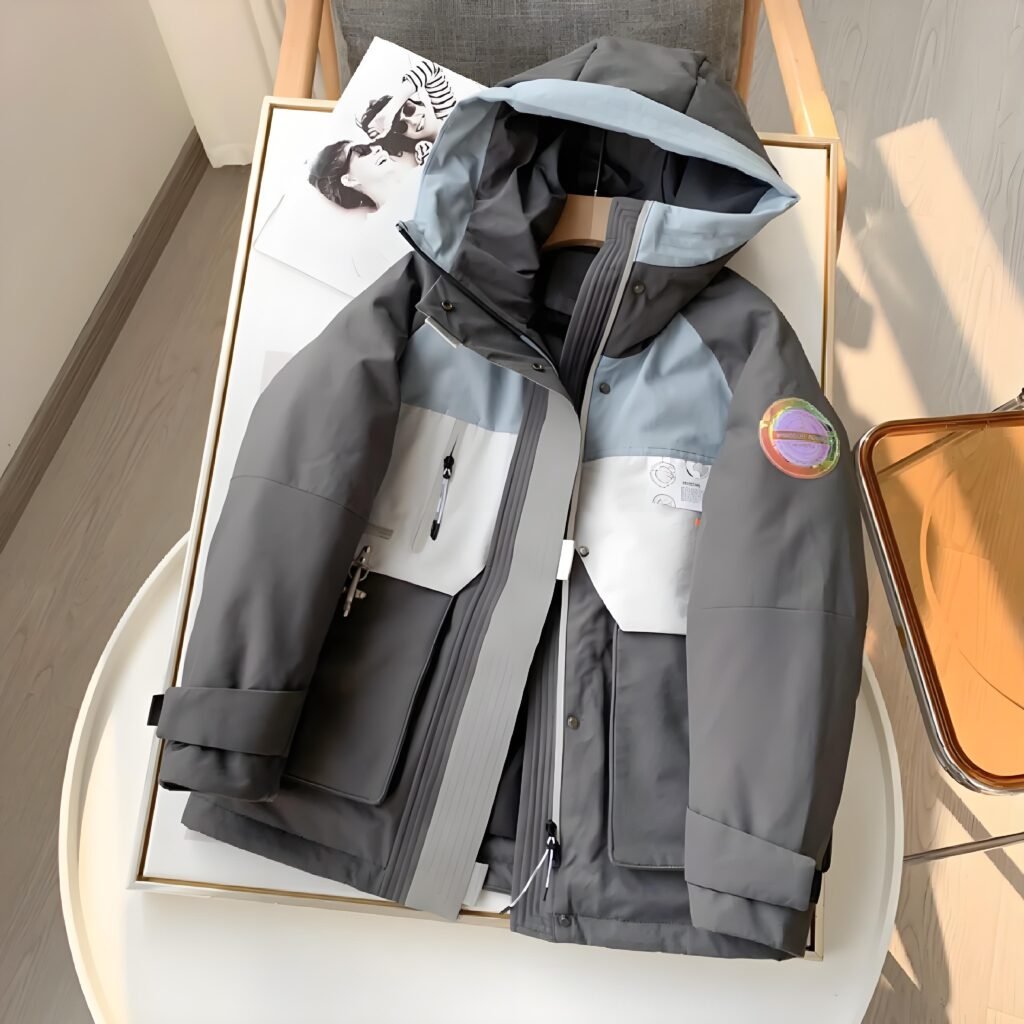
Waterproof canvas’s durability and weatherproofing suit tents, backpacks, outdoor furniture, marine covers, tarps, umbrellas, and workwear. Military tentage uses heavy‑duty waxed or PVC canvas (10,000 mm hydrostatic). Backpack exteriors often feature Trillium or TPU laminate for abrasion resistance. Awnings rely on PU‑coated cotton blends for UV and mold protection. Designer tote bags use waxed cotton for water‑beading style, while cloth diaper makers choose PUL for leak‑proof yet breathable diapers.
- Outdoor Gear Tents: 12 oz waxed duck, hydrostatic 5,000 mm. Backpacks: 60/40 nylon/cotton PUL, 7,000 mm head.
- Marine Applications Boat Covers: 100% polyester PVC canvas, 15,000 mm head.
- Home & Fashion Awnings: 65/35 cotton/poly PU, UV‑resistant finish. Tote Bags: Waxed duck canvas for style & function.
| Application | Canvas Type | Hydrostatic Head (mm) | Special Feature |
|---|---|---|---|
| Tentage | Waxed Duck Cotton | 5,000 | Breathable |
| Backpacks | Trillium PUL | 7,000 | Abrasion-resistant |
| Marine Covers | PVC Polyester | 15,000 | UV & saltwater-proof |
| Awnings | PU Cotton Blend | 3,000 | UV & mold-resistant |
| Tote Bags | Waxed Duck Cotton | 1,000 | Fashionable, water-bead |
How Should You Care for and Clean Waterproof Canvas?
Maintaining waterproof canvas involves spot cleaning, gentle washes, and periodic reproofing. For mud and dirt, brush off debris, then wipe with a mild soap solution (pH-neutral detergent). Avoid harsh detergents or bleach that degrade coatings. Hand or machine‑wash on gentle cycle (cold water), air‑dry away from direct heat. To restore water resistance, reapply heat‑activated wax or DWR spray (for PU/PVC canvas). Store canvas items dry, folded loosely to avoid creases that crack coatings.
- Cleaning Protocols Spot Clean: Soft brush + soap water; rinse. Full Wash: Gentle cycle, 30 °C, no spin > 600 rpm.
- Reproofing Processes Waxed Cotton: Apply new wax layer, heat with hairdryer or oven (80–100 °C). PU/PVC: Use DWR spray, air cure 24 h.
- Damage Prevention Avoid High Heat: No tumble‑dry above 50 °C. UV Exposure: Limit sun bleaching to preserve coatings.
| Care Step | Method | Frequency |
|---|---|---|
| Spot Cleaning | Mild soap + water | As needed |
| Machine Wash | Gentle cycle, cold water | Quarterly or after heavy soiling |
| Reproof Waxed Cotton | Apply wax + heat-cure (80 °C) | Annually |
| DWR Reapplication | Spray on + air cure | Every 6 months |
Are There Sustainable or Recycled Waterproof Canvas Options?
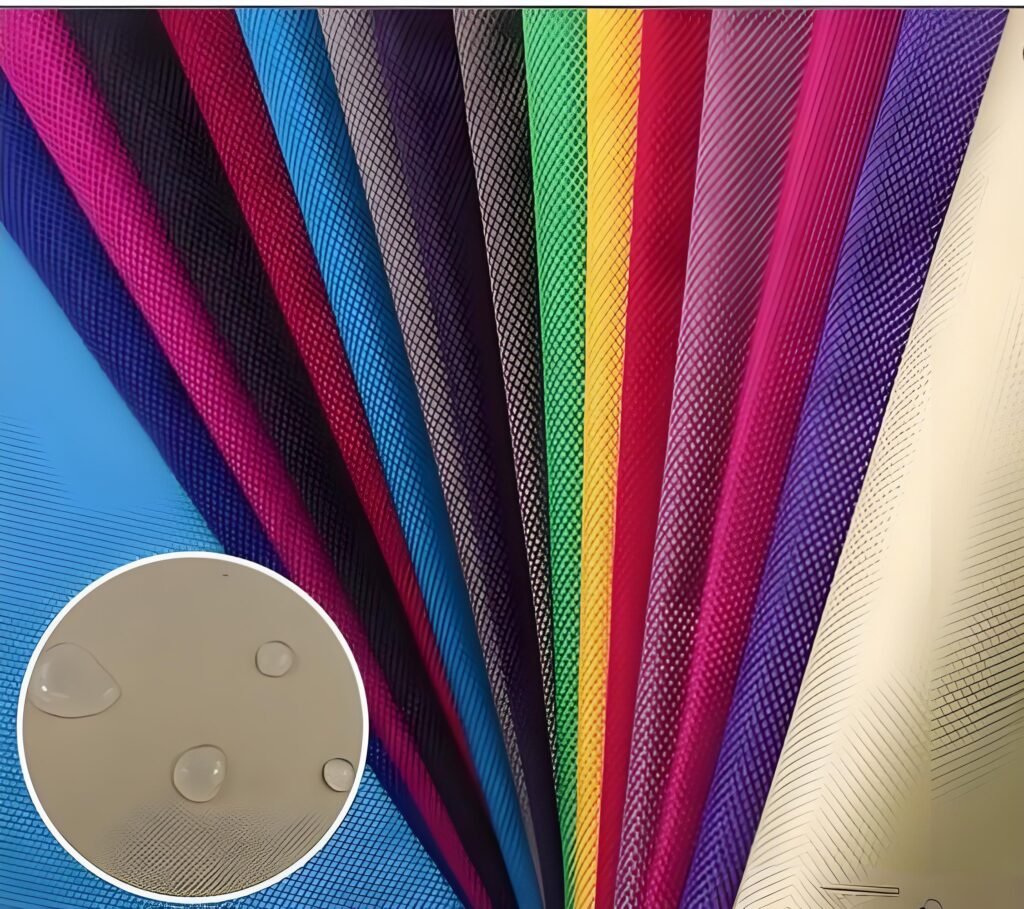
Eco‑conscious manufacturers now offer recycled polyester PVC canvas, organic cotton waxed duck, and biodegradable PUL (plant‑based TPU). Recycled PET canvas uses post‑consumer bottles, cutting CO₂ emissions by 50–70%. Organic cotton duck (GOTS‑certified) avoids pesticides and uses rain‑fed farming to slash water use by 80%. Emerging bio‑PU coatings derived from castor oil provide PFAS‑free waterproofing. These options ensure performance without sacrificing environmental stewardship.
- Recycled PET Canvas CO₂ Reduction: 1 kg rPET saves 2 kg CO₂e vs. virgin PET. Properties: Tensile 22 N/cm; hydrostatic 5,000 mm.
- Organic Cotton Waxed Duck Water Use: 1,000 L/kg vs. 10,000 L/kg conventional. Certification: GOTS, Oeko‑Tex® 100.
- Bio‑PU Coatings Composition: 30% plant-based polyols. Performance: Hydrostatic 3,000 mm; biodegradable.
| Sustainable Option | Water Use (L/kg) | CO₂ Reduction | Certification |
|---|---|---|---|
| Organic Cotton Duck | 1,000 | Baseline | GOTS, Oeko‑Tex® |
| Recycled PET Canvas | 30 | –50–70% | GRS |
| Bio‑PU Coating | N/A | –30% vs. PU | Pending |
How Can You Choose the Right Canvas for Your Project?
Selecting the ideal canvas hinges on your application’s demands for strength, waterproofing, breathability, and appearance. Start by identifying use-case priorities: heavy-duty outdoor gear (tents, awnings) calls for high‑weight waxed cotton (12 oz/yd²) or PVC‑coated polyester (15,000 mm hydrostatic head). If flexibility and lightness matter—such as diaper covers or pack linings—opt for PUL (5,000 mm head, MVTR 1,000 g/m²·24 h). For fashion accessories, 10 oz cotton duck with a single wax or DWR finish balances drape, printability, and rain-shedding. Always check hydrostatic head, MVTR, abrasion resistance, and UV stability against environmental conditions. Factor in maintenance—waxed canvas requires rewaxing, while laminated fabrics need only a spray reproof. By mapping your performance specs to canvas properties, you ensure longevity, comfort, and functionality.
- Match Canvas Weight to Strength Needs
- Lightweight (8–10 oz/yd²): Drapes well, ideal for art canvases and lightweight totes.
- Midweight (10–12 oz/yd²): Versatile for bags, light awnings, and apparel.
- Heavyweight (12–16 oz/yd²): Best for tents, marine covers, high‑stress upholstery.
- Select Waterproof Rating & Breathability
- Hydrostatic Head: 1,000 mm (light rain) to 15,000 mm (marine use).
- MVTR (Moisture Vapor Transmission Rate): 500 g/m²·24 h (waxed) to 1,200 g/m²·24 h (PU canvas).
- Evaluate Fiber & Coating Trade‑Offs
- 100% Cotton Duck + Wax: Natural hand, breathable, requires rewaxing.
- PU‑Coated Cotton/Polyester: Durable, moderate breathability, low maintenance.
- PVC‑Coated Polyester: Maximum waterproofing, low breathability, heavier weight.
| Application | Canvas Type | Weight (oz/yd²) | Hydrostatic Head (mm) | MVTR (g/m²·24 h) | Maintenance |
|---|---|---|---|---|---|
| Art Canvas | 100% Cotton Duck | 8–10 | N/A | High (>1,500) | Framing, priming |
| Tote Bags | Waxed Cotton Duck | 10 | 1,000–3,000 | 500–800 | Annual rewax |
| Outdoor Apparel | PUL | 8–10 | 5,000 | 1,000 | Wash & air‑dry |
| Tents & Tarps | PVC‑Coated Polyester | 12–16 | 10,000–15,000 | 200–500 | Wipe clean, store dry |
| Marine Covers | Heavy PVC/TPU Laminate | 14–16 | >15,000 | 200–400 | Rinse salt, air dry |
By systematically evaluating weight, waterproof rating, breathability, and maintenance, you can pinpoint the perfect canvas that meets both your performance criteria and long‑term care goals—ensuring your project stands up to the elements and lasts for years.

